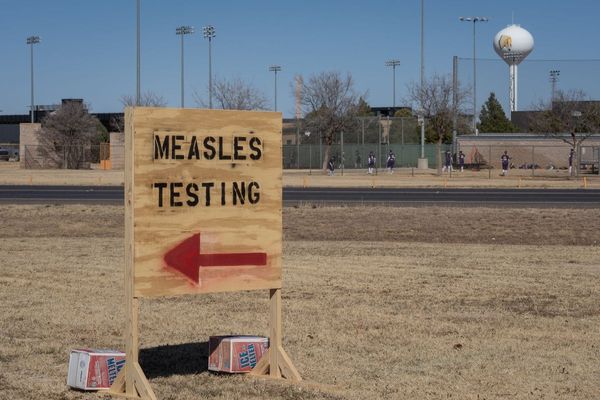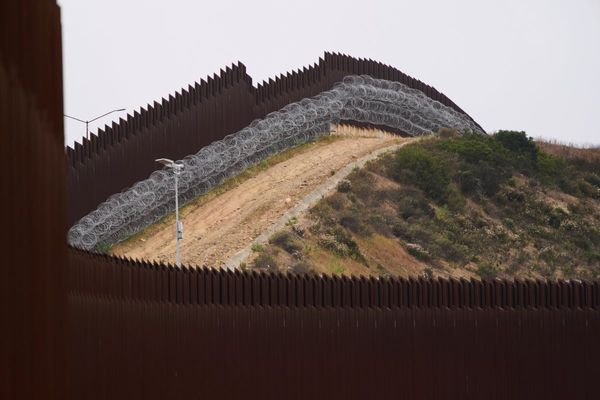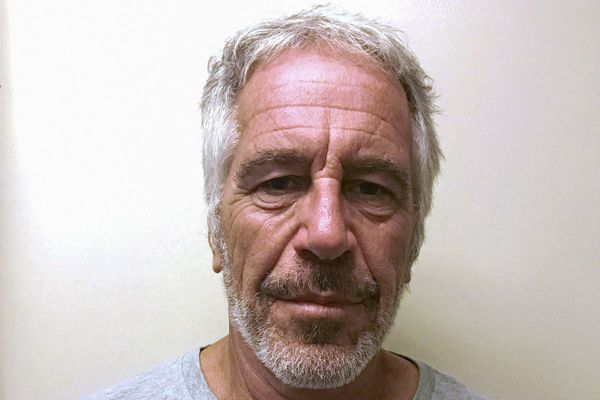
Federal environmental authorities have ordered a temporary halt in the shipment of contaminated waste from the site of the train wreck in East Palestine, Ohio, earlier this month, amid fears of further harm from the toxic waste.
Hazardous waste disposal facilities near Houston and Detroit are planning to receive most of the contaminated water and soil from the East Palestine train wreck site, raising the risk that some of the dangerous chemicals could end up in the environment elsewhere.
Debra Shore from the Environmental Protection Agency (EPA) said on Saturday the agency had ordered rail company Norfolk Southern to “pause” shipments from the site but vowed that removal of the material would resume “very soon”.
“Everyone wants this contamination gone from the community. They don’t want the worry, and they don’t want the smell, and we owe it to the people of East Palestine to move it out of the community as quickly as possible,” Shore said.
Until Friday, Shore said, the rail company had been solely responsible for the disposal of the waste and supplied Ohio environmental officials with a list of selected and utilized disposal sites. Going forward, disposal plans including locations and transportation routes for contaminated waste would be subject to EPA review and approval, she said.
“EPA will ensure that all waste is disposed of in a safe and lawful manner at EPA-certified facilities to prevent further release of hazardous substances and impacts to communities.”
Shore said officials had heard concerns from residents and others in a number of states and were reviewing “the transport of some of this waste over long distances and finding the appropriate permitted and certified sites to take the waste”.
The revelation of the contaminated water’s destination drew outrage this week from metro Houston residents and officials who fear for their communities’ safety. But the concern is not just “why is it coming here?’’ said Bryan Parras, who is part of Sierra Club’s Gulf Coast’s healthy communities program.
“If some of these chemicals are so bad that the only way to get rid of them is to bury them in a deep hole, then why are we producing these chemicals in the first place?” he asked.
A Norfolk Southern train carrying vinyl chloride used to produce PVC plastic derailed on 3 February in the small industrial town of 4,700 people, located at the edge of the Appalachian hills in Ohio. Disposal of the leftover contaminated water and soil raises new questions about toxic chemicals’ life cycle as the waste heads to facilities with histories of problems.
EPA testing has confirmed that chemicals in soil and water include vinyl chloride, phosphene, benzene and a range of other volatile organic compounds – known as VOCs – and particulate matter.
Independent public health experts say water and soil are also likely contaminated with dioxins, polycyclic aromatic hydrocarbons (PAHs), perfluoroalkyl and polyfluoroalkyl substances (PFAS), and other similar dangerous compounds. But the EPA has so far resisted calls from them and Ohio’s US senators to test for those chemicals.
The soil was scheduled to go to a US Ecology landfill in Belleville, Michigan, which sits at the edge of metro Detroit and just a few miles from Ann Arbor, two of the state’s most populous regions. The contaminated water is slated to be sent to a Texas Molecular deep well injection facility in Deer Park, in the same county as Houston, the fourth most populous US city.
The most likely contaminant to be released in the environment in Michigan in the near term is PFAs, a highly toxic class of chemicals widely used in firefighting foam that experts say was likely deployed in East Palestine. It’s also widely used in other industrial products and may have been in the train tankers.
The US Ecology landfill receives, treats and stores toxic waste from around the country, and such facilities are “carefully constructed units designed to protect groundwater and surface water resources”, according to the EPA.
However, the US Ecology landfill has a history of leaks and safety violations, though it is one of a very few sites east of the Mississippi River that can take the most dangerous of toxic waste. It is also near a Norfolk Southern-owned track where a freight train derailed last week.
If contaminated soil is sent to the facility, the chemicals would probably end up in the property’s leachate, which is formed when rainwater filters through a landfill’s wastes. Some chemicals are removed from leachate by a wastewater treatment plant on site, but the facility is only required to test its discharge quarterly, said Denise Trabbic-Pointer, a toxics and remediation specialist with Sierra Club Michigan who has experience in hazardous waste management.
It is also unclear if US Ecology is required to check for and remove chemicals that may be in East Palestine’s soil. State records show the company spits high levels of PFAs into a local sewer system where the chemicals can end up in local waterways.
East Palestine and Belleville have become “sacrifice zones for our nation’s most harmful wastes”, said Sierra Club of Michigan director Elayne Elliot.
About 2m gallons of contaminated water is set to be sent about 1,300 miles by truck and rail from the wreck site to Texas Molecular, news that caught local officials by surprise this week. Over 150,000 deep well injection wells exist nationwide, and they are controversial because they are prone to leaking toxic waste into groundwater and are thought to be causing earthquakes.
Local officials have questioned why the waste was sent so far. Entities that need to dispose of toxic waste need to provide storage facilities with a toxics profile of its waste, and in some cases the waste must be tested, Trabbic-Pointer said. But entities can choose to dispose of waste at any facility that can legally accept it.
The Texas Molecular site is in a largely low income neighborhood, most of whose residents are racial minorities, Parras said. Shipping the waste such a long distance is dangerous, and so is storing it in the ground, he added.
“These things require a lot of money and time and it begs the question, ‘Why do such risky things that put millions of people at risk without having answers?’” Parras said. “This is why we’re in the situation we’re in right now.”
With Associated Press







